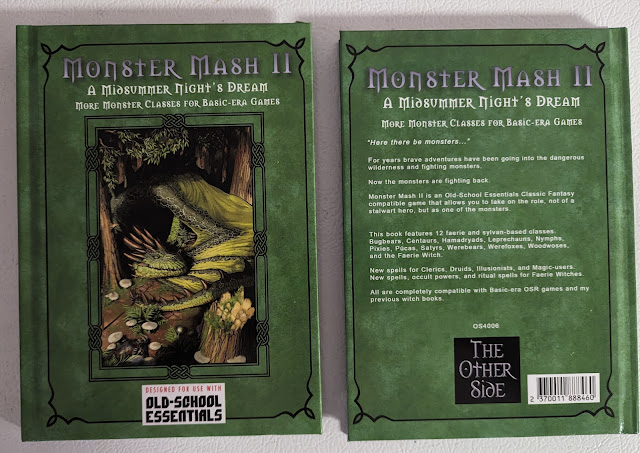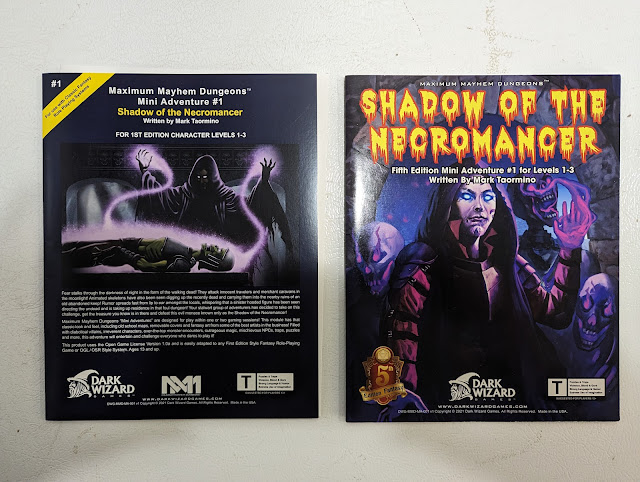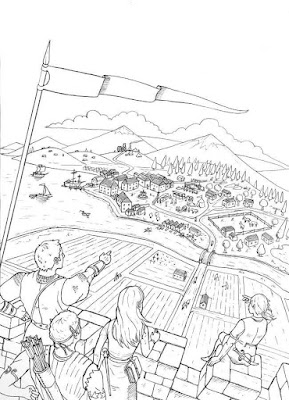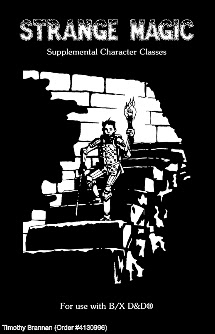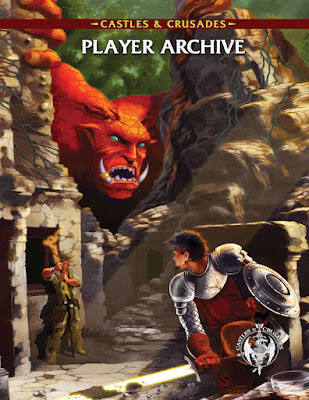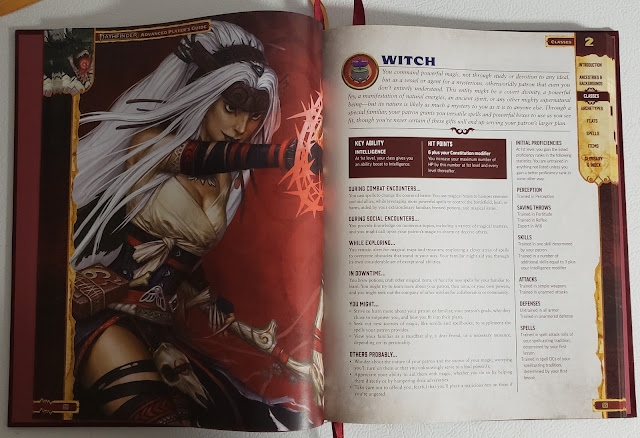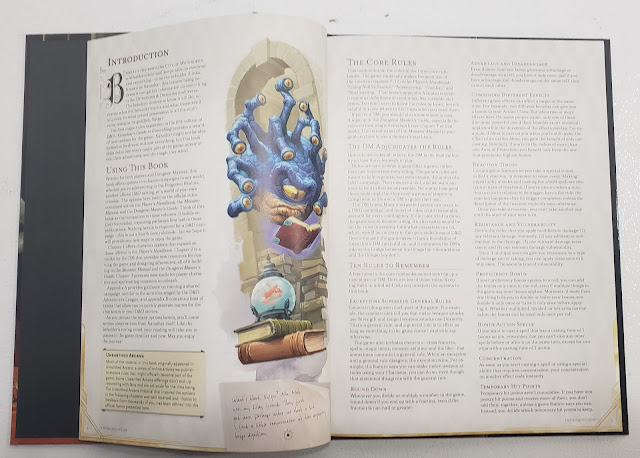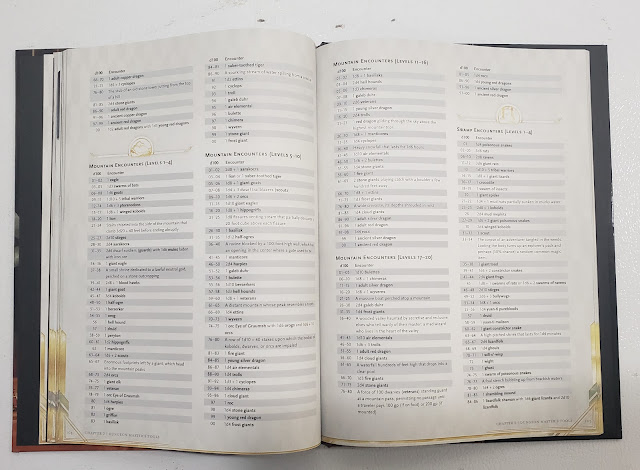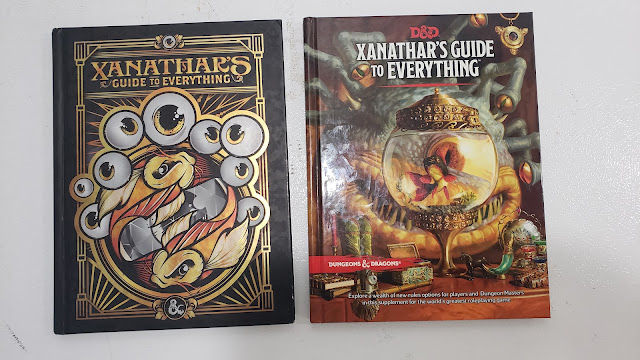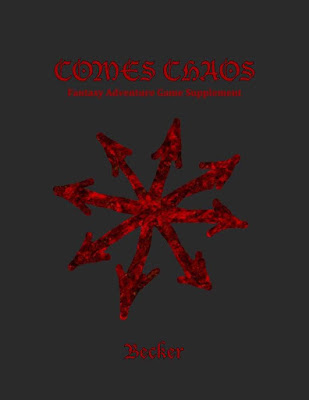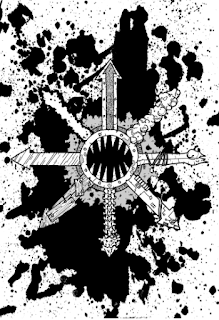I am a complete sucker for anything B/X. While I have many games I love, it is B/X era D&D that really gets my nostalgia going. So anything made for it gets my attention. While the products, both official and fan-made, can vary in quality, I am rarely disappointed.
One publisher that has delivered well on the nostalgia factor is Jonathan Becker of Running Beagle Games. Becker, known for his B/X Blackrazor blog, "gets" B/X D&D. He has demonstrated time and again that he gets how B/X is different that AD&D and indeed other Basic-era clones. His B/X Companion remains one of my top 10 favorite books of the published OSR books. So when he came out with a new book I jumped on it!
And...promptly forgot about it! Ok, in my defense October is like my high holy month and I had a lot going on. So now it is February and I figure I should come back to this one.
Comes Chaos
by Jonathan Becker. 64 pages, black & white art by Kelvin Green.
Comes Chaos is a combination rules addition/setting for use with B/X era D&D. It can be used with other versions of Basic D&D and the various clones, but there is a focus here. That is appropriate for a few reasons I will touch on in a bit.
Like the Basic and Expert books of old, and his own Companion book, this is a 64 page book. Printed with it's black and red cover it would look rather nice sitting next to the other books. At this point Becker has enough material (Companion, Complete B/X Adventurer, and this one) for a reasonable boxed set. Maybe one with a "3" in the corner.
PART 1: INTRODUCTIONComes Chaos deals, naturally, with the forces of Chaos (capital C) and how to use them in your game. There is an implied setting that can be used as-is or elements can be used in any game.
The book is formated like that of the Basic and Expert (and Companion) books, so following the flow of information is straightforward. The difference here is that these are alternate and additional rules.
This section also introduces the "Four Great Powers" the Demon Lords ArjaDem, MorSolahn, SeiAhsk, and TeeGal.
PART 2: RUINED PLAYER CHARACTERS
Here we get alterations to the seven player characters classes. Clerics of gods of Law, for example, cannot use reversed versions of their spells. But their "Turning Undead" chart is not extended to include the demons of this game. There is a new Magic-User "sub-class" (that word is not used) in the Chaos Sorcerer. This class works a bit like the Sorcerer or Warlock of other D&D games. It uses Intelligence as a Prime, but I am going to change it to Charisma.
The next part of this section deals with Corrupted characters and Chaos Champions. Corrupted characters are ones that started out "good" and then fell into chaos. Chaos Champions start out chaotic. These characters also gain the favor of one of the four powers.
The four powers and their gifts are covered last. The four masters are unique to this book but remind a bit of the sort of creatures one might find in the writings of Moorcock. Not quite demons, not quite Lovecraftian horrors, but a little bit of both. There is also a desire, and this might just be me, to link them up with the old AD&D Elemental Princes. Maybe because there are four.
PART 3: TAINTED MAGIC
Magic gets some changes in Comes Chaos. Both Clerics and Magic-users now have some restrictions on what spells they can normally cast. We also get some new Dark Sorcery spells used by Chaos Sorcerers, Demons, and Chaos Champions. Additionally, some spells are "patron" spells for three of the four Chaos Masters. The other Master, ArjaDem, forbids their followers from using magic.
The spells are in B/X format and there are eight per level for levels 1 to 6. Some are repeats of other B/X spells. There are enough new spells to keep players on their toes when dealing with a minion of chaos.
PART 4: EXPLORING THE WASTESThe Wastelands are areas that are corrupted by Chaos. Spending time in these lands also leads to corruption and mutations in the living creatures here. This section also has other hazards such as how long food and water will last, how much movement and time is changed, and what sorts of strange occurrences and creatures that can be encountered. The section has a whole Colour out of Space feel to it.
PART 5: BLOOD AND SOULS
This section deals with encounters and combat. Alterations are given for Champions of Chaos and demons as well as others dealing with these threats.
PART 6: BEASTS AND DEMONS
This is our monster section and it has 37 new monsters. As expected 19 of them are demons and 4 are undead. There are also corrupted versions of other monster types (elves, dwarves, etc) that can be used as guidelines for other corrupted monsters not listed.
The demons depicted here are not the Demons of the AD&D monster manual. Nor are they the demons of Earth myth and legends. These are new creatures unique to this book. There are some interesting ones here and again the feeling is not quite demons and not quite Lovecraftian horrors, but a combination of the two.
PART 7: UNHOLY TREASURES
This section covers the treasures you can find with these creatures or in the wastelands.
PART 8: DEMON MASTER INFORMATION
The person running these games is called the "Demon Masters" which is just a way really to use "DM." This section covers how to deal with corruption, magical research and chaos magic, and how to design a wasteland.
There is another class presented here, the Witch Hunter, from the Complete B/X Adventurer. Despite the success and dare I say universal approval of his own Companion Rules, this class only goes to level 14. Though it is mentioned that levels 15-36 can be found in the Adventurer book.
In fact the next section covers using this book with the Complete B/X Adventurer and the B/X Companion.
PART 9: SLAVE-LORDS OF CHAOS
This section covers how to run an "evil" game including unique experience point rewards.
Comes Chaos is a great extension to any B/X style game. Especially ones where "Chaos" is more of a factor than say "Evil."
Chaos in Comes Chaos follows the implicit guidelines originally set up in Moldvay Basic. Chaos is not just a philosophy or moral outlook, it is a force and "thing" that must be dealt with. I feel this book does a good job in trying to expand on this notion and make it something to use in your games.
The ideas presented here are not all unique; Lamentations of the Flame Princess and Dungeon Crawl Classics cover similar ground in terms of Chaos as a Force to Fight and Realms of Crawling Chaos for the Lovecraftian Chaos is a Force. Comes Chaos though combines these ideas into something that is uniquely B/X. Yes both LotFP and Realms of Crawling Chaos have strong B/X roots, but this is explicitly B/X.
Given this, Comes Chaos should work well with Old School Essentials as well. Though one gets the feeling that OSE is more like "The Hobbit" than it is "Colour Out of Space." Though I am not sure it would feel the same for Advanced versions of the Old-School games since there is a focus on Good vs. Evil there as well.
The art by Kelvin Green is great and having one artist to do all the work gives the book a united vision.
It is available at DriveThruRPG where it is currently just under $14. The rule of thumb I have adopted over the years is 10¢ per page, which would place this at $6.40. The price is twice that, but I still feel it is worthwhile. Again this is a rule of thumb, not a hard and fast rule.
There is no print-on-demand option on DriveThru for this. Though none of Running Beagle's books have this. You can though get print copies of this and all their other books from their website. Print copies of Comes Chaos are $27.99 and handled via PayPal.
Comes Chaos also is not released through the Open Gaming License. Not an issue to be honest, but I look at it as a way the creator/publisher "gives back" to the community. Generally speaking, OGL products sell better than their non-OGL contemporaries/counterparts.
Comes Chaos is a fun supplement. I used similar ideas when running my B/X games in the past I will adopt some of these ideas to use in my current OSE game. I am not likely to use the four demonic princes, my game has a solid cosmology, but I might adopt them for a 5e game I am running that could use Chaotic Evil figures like these.
Who should get this? DMs that want to add a little chaos effects to their games but do not want to go the full Dungeon Crawl Classics route. DMs that play/run B/X and/or OSE in particular.
This is also for DMs that enjoy the classical roots of the game but whose interests lean more towards Moorcock rather than Lovecraft.
For me, the price and the lack of the OGL keep it from being a perfect addition to my games.


